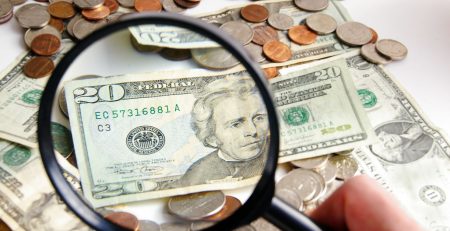There comes a time in every person’s life when money is short. And the thing is, bills don’t stop chasing us just because we can’t afford them. There are plenty of bills to pay, be it rent, education, healthcare or childcare. An obvious short-term solution to our problem is just to borrow money. But, we all know that’s a bad idea. Borrowing money from people makes relationships tense. Borrowing money from lenders, like banks, just adds more stress to our lives.
What we need to realize is that there are other options out there. However, these options require us to do more research and paperwork. But if we think about it logically, these options can help us end up with less debts down the road. The options we’re talking about are government assistance programs. There’s a bunch of federally funded assistance programs to help us out in different situations. But, as we said, you need to do more research and paperwork to qualify for them. The research you’ll need to do mainly concerns knowing which programs you’re eligible for and how to apply for them. This article will point out some of these options. Hopefully, you’ll manage to save some money if you go along with any of them.
Why Would The Government Just Pay People’s Bills?
It’s pretty simple really. To get your answer, you need to look at what happens to people when they run out of money. When families and individuals don’t have money, they will avoid steps that will advance their lives in positive ways, because they cost money. Without money, people will avoid education, healthcare, proper childcare and even paying rent on time. Financial distress can also lead some people to criminal behavior. On the other hand, if people are struggling less with money it’s good for the overall society.
If people are financially stable, they’ll get better education, look after their health and raise children better. Moreover, if people have money, they can buy things, which makes money move around more, making the economy stronger. So, if the government helps people improve their lives by financially supporting them, it can actually save more money down the line. If people are more educated, they make more money for the country. People having better healthcare means the government will have to spend less on treating folks. If the overall living standard improves, crime rates will be lower, which means less spending on policing and security.
What Kind Of Federally Funded Assistance Programs Can I Find?
In a general sense, there are federal assistance programs to help with all kinds of bills. Some programs are made to help out with rent, others with school fees. There are also programs made to help you with hospital bills. Before you get too frustrated trying to look for the right program for you, check out Benefits.gov. The website was created by the government to make it easier for people to find the programs they’re eligible for. It comes with a brilliant function called “benefit finder.” The idea is that you answer a bunch of simple questions about your living situation and it narrows down the programs you qualify for. While the website doesn’t contain 100% of all federal assistance programs available, it’s still a pretty great place to start.
So, as we said, programs will help with all kinds of bills. We also said the idea behind these federally funded programs is to help people who would otherwise be in financial trouble. So, you’ll find a lot of the programs we’re about to talk about focusing on low-income families and individuals. However, there are several criteria that focus on special individuals, such as veterans or disabled people.
Housing Federal Programs
Housing prices have been going insane lately. According to research, inflation in the housing market reached 19.3% as of July 2021. Thankfully, there are plenty of programs offered by the federal government to help out with the housing issue. Some of these programs are aimed towards helping you pay for rent, others can actually help you buy your own home. If you’re struggling with paying for your housing, you should definitely look into these programs. Just remember to always make sure that you’re eligible for them.
Each program comes with a different set of qualifications, benefits and overall waiting times. Make sure you apply for the right program for you. Otherwise, you might waste your time waiting for benefits you won’t receive, while taking someone else’s turn in line.
Housing Choice Vouchers/Section 8 Housing
This federally funded assistance program is just awesome. Developed by the Department of Housing and Urban Development, Section 8 aims to help low-income families find safe and sanitary housing.
The program works through vouchers. Those vouchers help you pay for rent to landlords that will accept them.
Let’s Start With How You Can Qualify For Those Vouchers
- Anyone applying will need to be at least 18 years old.
- Applicants will need to be US citizens or eligible non-citizens. Eligibility for non-citizens will depend on the status of their residency. Permanent residents should have no problem applying for the voucher. However, temporary or non-official residents might not be eligible.
- Applicants must not have records of drug-related criminal activities, especially in the 3 years prior to the application for the voucher.
- Anyone applying for Section 8 must not make more than 50% of their local media income. What that means is that if the average income in your city is $30,000 for example, you should not be making more than $15,000 to qualify.
Alright, So How Does This Federally Funded Program Actually Work?
So, for anyone applying for this program, you need to contact your local Public Housing Authority (PHA) first. You’ll find that those guys will be the ones to go to for a lot of federal housing programs. During the process of applying, along with providing the necessary paperwork, you’ll also need to find a home that’ll take those vouchers. If the process goes smoothly, you’ll be placed on a waiting list until you get your voucher. Once your voucher gets approved and you receive it, you can move into your new home. Under this program, typically you’ll be required to pay 30% of your income towards rent, and the government will take care of the rest.
Few Things To Keep In Mind When You Move Into Your Section 8 Housing
- Obviously, you should generally avoid committing crimes. But in this case, committing any crimes (especially drug related ones) will probably result in losing your voucher
- You need to tell your local PHA about any roommates that you plan on bringing in
- You also need to tell your PHA about any changes in your income
- Likewise goes with any changes in the number of members in your family
Chenoa Fund
This fund is mainly tackling the issue of affording down payments for new homes. The fund will provide up to 3.5% down payment assistance. That means that you can receive money equal to 3.5% of the value of your new home. There are 2 main points to focus on when applying for this program:
- You need to make sure that your FICO® credit score is at least 620.
- Your debt-to-income ratio should not be more than 45%.
If eligible, you can receive a mortgage that has no monthly payments and no interest rate. And the cool part is that if you pay your mortgage on time for 36 months, your debt can be forgiven.
Federal Housing Administration (FHA) Loans
To help low- and moderate-income families, this loan also doesn’t require a very high credit score. The loan aims to help people get mortgages for their new homes. The idea is that your loan is insured by the government, making it easier to get accepted for loans from lenders approved by the FHA.
If your credit score is 580 or above, you can borrow up to 96.5% of your new home’s value. But if your credit score is somewhere between 500 to 579, you can borrow up to 90%. Here’s a little list of FHA loans you should look into:
- Home Equity Conversion Mortgage (HECM)
- FHA 203(k) Improvement Loan
- FHA Energy Efficient Mortgage
- Section 245(a) Loan
Federally Funded Education Programs
Needless to say that education in the US is by far the most expensive in the world. More than 44 million Americans that have student debt. As a result, many Americans avoid going to college, which is a big problem in the grand scheme of things. That’s why we really recommend looking into grants. The thing about grants, unlike loans, they don’t need to be paid back. That way, students can actually go to college and not worry about spending the rest of their lives paying back their student loans.
Pell Grant
This is probably the most popular student grant program. The main aim of the Pell grant is to help low-income students go to college. The primary focus of the program goes towards undergraduate students. Through this grant, students can get up to $6,895 per academic year.
To apply for the Pell grant, students must fill out the Free Application for Federal Student Aid (FAFSA®) form. During the process of the application, the deciding committee will focus on 2 factors:
- Expected Family Contribution (EFC). This is a bit of math done by the government to calculate your family’s taxed and untaxed income. Other factors may include the size of your family and how many members are going to college at the same time.
- Cost Of Attendance (COA). This is the sum of how much it will cost for you to go to college. The costs will include tuition fees, cost of room and boarding, cost of books and transportation..etc
Federal Supplemental Educational Opportunity Grant (FSEOG)
This grant works a lot like the Pell grant. It also aims to help low-income students. To apply for it, a student needs to fill out the Free Application for Federal Student Aid (FAFSA®) form. Where the differences lie is within how the money is distributed. What makes FSEOG different from Pell is that FSEOG is limited to schools that participate in the program. Also, the funds are limited. As each school is given a certain budget, the school will not be able to give students the grant if they’ve already reached the budget.
Federally Funded Healthcare Programs
Besides housing and education, healthcare in America is one of the biggest reasons people get into debts. The cost of a simple hospital visit or ambulance ride alone can set you back quite a few bucks. That’s why it’s really important to get help from the government whenever you can, to save a bit of money.
Medicaid
If you live in today’s America, there’s no way you haven’t heard of Medicaid. This federal assistance program aims to provide medical care to those who need it the most. That list includes people whose health is at risk, such as disabled people and the elderly. Other people on that list include people who aren’t doing well financially. However, the program can provide different benefits, according to which state you live in.
Medicare
This one also works on providing affordable healthcare to US citizens. The main difference is that Medicare focuses on helping out the elderly (but can also help those with a qualifying disability). To qualify as “elderly” in this scenario, you need to be 65 years old, or older. You can also qualify for Medicaid and Medicare at the same time.
Conclusion
It’s understandable if money is tight and affording everything is becoming challenging. Many of us struggle to juggle paying for healthcare, education, housing and more all at the same time. That’s why you should always look to the government for a helping hand. There are plenty of federally funded assistance programs out there, it would be a shame if you don’t use one.











